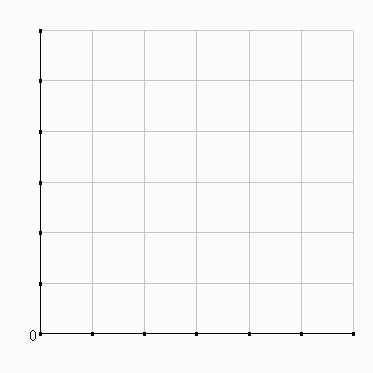| Geometry Compare points a and b: The firm gains by reallocating its budget, hiring more L and less K. Firm goes to tangency between Qo and lowest Co which allows production of Qo
|
 |
|||||||||||||||||||||
III. Theory of the firm: production and costs
C. The producer's optimum
We can look at a firm's decisionmaking from 2
directions:
Given Co: How much can the firm produce with that budget--strictly
analogous to consumer theory
--Max Q given Co, PL, PK
Not really the typical situation
Alternatively and more common:
Given an output level to produce: What is the minimum cost of producing
that output
--this is the problem we'll work on. It's a problem which must be
solved for any Q which the firm produces.
--rather than start with some BL and move Uo's around to reach max.,
start with some Qo and move Co around to find min. TC.
--but equil. will look the same
--we'll want to then figure out just how much the final TC is.
Comparing value and cost
Example:
L=6; K=10; Qo = 190 cassettes
PL=$60; PK=$20
MPL=35; MPK=7
? is this firm at a production optimum?
The tangecy condition for production:
MRTS =
MPL/MPK = 35/7 = 5
PL/PK = 60/20 = 3
MRTS > PL/PK
=> relative prod'y of another L exceeds its relative cost
=> hire L, fire K.
Substitution process:
+L, -K --> MRTS falls.
Continue until MRTS = PL/PK
| Geometry Compare points a and b: The firm gains by reallocating its budget, hiring more L and less K. Firm goes to tangency between Qo and lowest Co which allows production of Qo
|
 |
|||||||||||||||||||||
Note the tangency condition:
Relative productivity of labor = its
relative cost
MPL/MPK = MRTS = PL/PK
Slope of Qo = Slope of Co
3 ways to think about the optimum:
(1) tangency condition:
MRTS =
MPL/MPK = PL/PK
30/10 = $60/$20 = 3
(2) Least-cost condition (LCC):
MPL/PL = MPK/PK
Works for many inputs:
| L | K | Steel | |
| MP | 30 | 10 | 100 |
| P | $60 | $20 | $100 |
| MP/P (extra output per $) | 1/2 | 1/2 | 1 |
? Can you be more efficient?
? How?
In general, switch to the
input with the highest pay-off per $
Optimum => equal pay-offs per $ for all
inputs
(3) equal marginal cost condition:
PL/MPL =?
PK/MPK =? Psteel/MPsteel
$60/30 =?
$20/10 =? $100/100
Using L or K, MC = $2
Using steel, MC = $1
In general, switch to the
input which gives you the lowest MC.
Optimum => MC of Q is the same, no matter
how we try to produce it
Calculus of a production optimum
Same justification as before: to formalize quantitatively the validity of this optimization process
See solving cost minimization problems worksheet
Final exercise to try: Least-cost condition worksheet